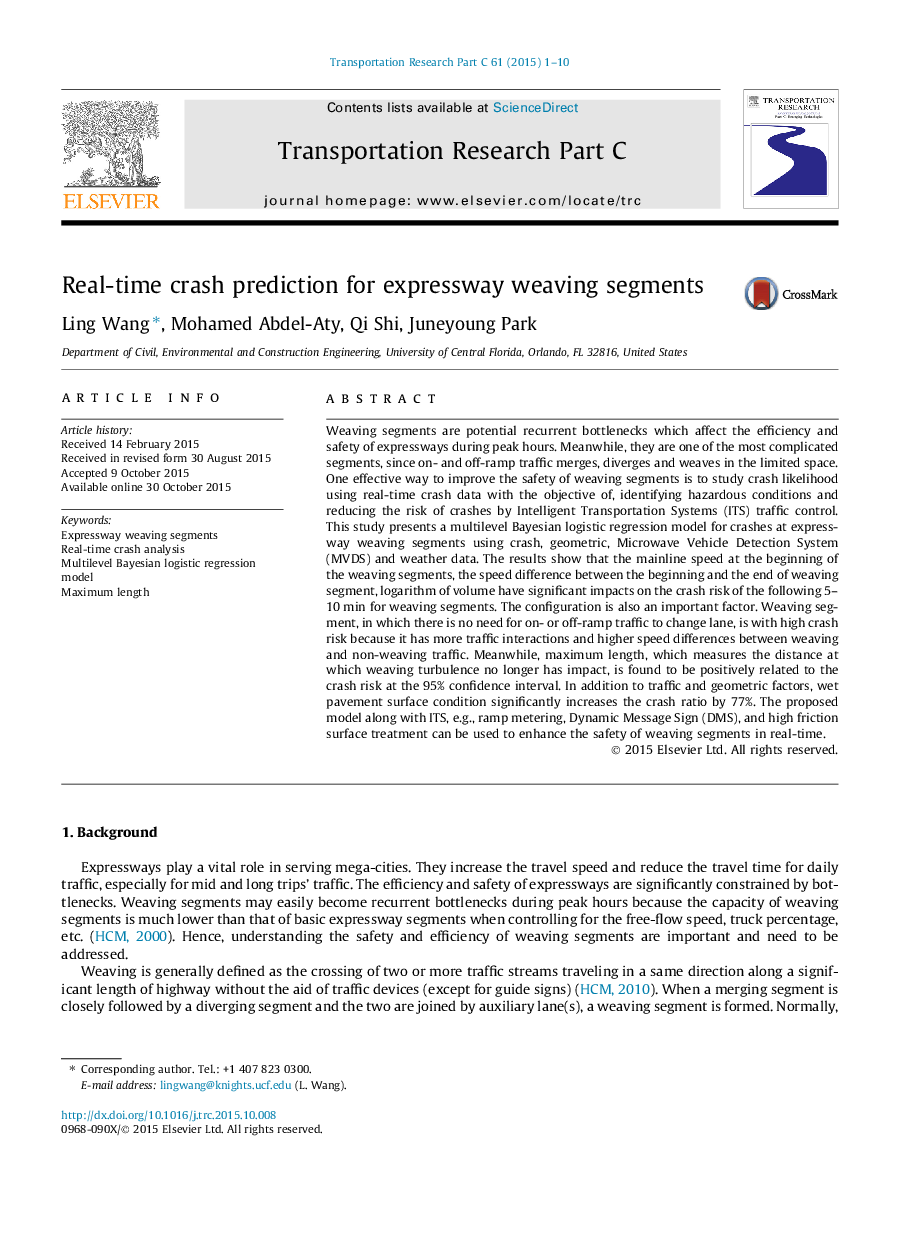| کد مقاله | کد نشریه | سال انتشار | مقاله انگلیسی | نسخه تمام متن |
|---|---|---|---|---|
| 526351 | 869097 | 2015 | 10 صفحه PDF | دانلود رایگان |
• Real-time crash prediction for weaving segments.
• Higher speed difference between the beginning and end of weaving segment results in higher crash risk.
• Wet pavement surface condition increases crash risk by 77%.
• Maximum length is more important than segment length in crash risk estimation.
• Weaving segment configuration significantly impact crash risk.
Weaving segments are potential recurrent bottlenecks which affect the efficiency and safety of expressways during peak hours. Meanwhile, they are one of the most complicated segments, since on- and off-ramp traffic merges, diverges and weaves in the limited space. One effective way to improve the safety of weaving segments is to study crash likelihood using real-time crash data with the objective of, identifying hazardous conditions and reducing the risk of crashes by Intelligent Transportation Systems (ITS) traffic control. This study presents a multilevel Bayesian logistic regression model for crashes at expressway weaving segments using crash, geometric, Microwave Vehicle Detection System (MVDS) and weather data. The results show that the mainline speed at the beginning of the weaving segments, the speed difference between the beginning and the end of weaving segment, logarithm of volume have significant impacts on the crash risk of the following 5–10 min for weaving segments. The configuration is also an important factor. Weaving segment, in which there is no need for on- or off-ramp traffic to change lane, is with high crash risk because it has more traffic interactions and higher speed differences between weaving and non-weaving traffic. Meanwhile, maximum length, which measures the distance at which weaving turbulence no longer has impact, is found to be positively related to the crash risk at the 95% confidence interval. In addition to traffic and geometric factors, wet pavement surface condition significantly increases the crash ratio by 77%. The proposed model along with ITS, e.g., ramp metering, Dynamic Message Sign (DMS), and high friction surface treatment can be used to enhance the safety of weaving segments in real-time.
Journal: Transportation Research Part C: Emerging Technologies - Volume 61, December 2015, Pages 1–10
